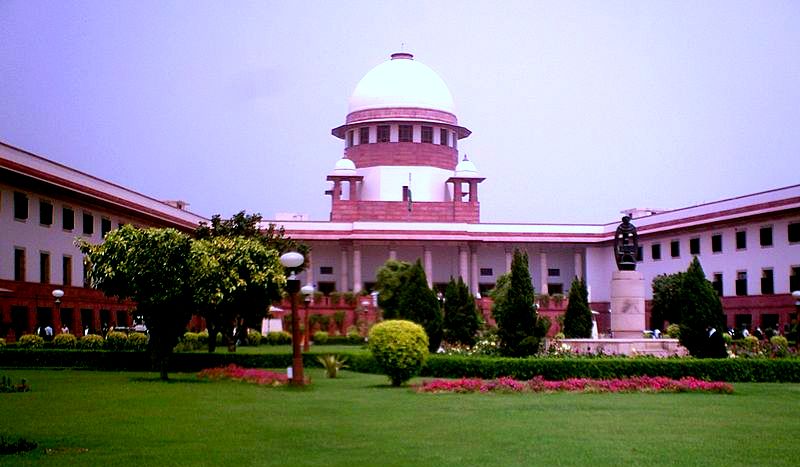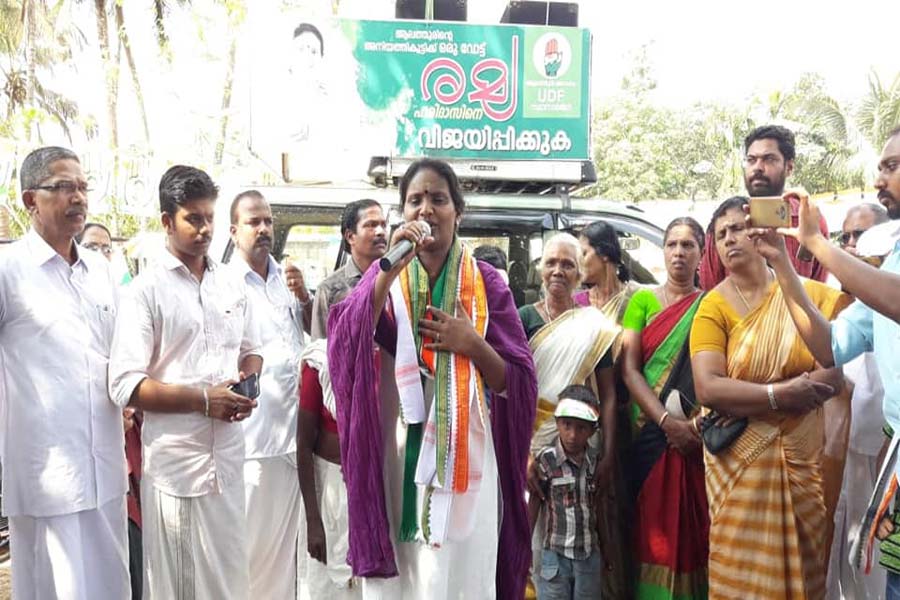By Manu Sebastian
Judicial temperament should be one based on rationality, sobriety and equanimity, and not based on sentimentality and populism. Through the judgment in the ‘Soumya Murder Case’, the Supreme Court has emphasised this fact, and has proved that judiciary is not intended to appease popular sentiment, but to administer justice in accordance with law and reason.
Indeed, the ‘Soumya Murder Case’ is an unfortunate incident. A poor young girl supporting her economically backward family with her meager income getting raped and killed during the course of her journey by public transport, viz. the Railways, is a tragic event that should not have happened in a civilised society. Understandably, the incident sent shock waves across society, disturbing its conscience. That the criminal was an immigrant having a history of habitual offences, who had no compunction in subjecting a dying girl to rape added to the fury of society. Mounting public pressure sent the police into swift action, and the criminal, Govindaswamy, was nabbed within two days. The investigation was over in 90 days, and the trial was completed in a record time of four-and-a-half months, whereby he was sentenced to death. The appeal before the High Court was disposed of sooner than usual, confirming the death sentence. Keralite society seemed to attain a sense of closure seeing the triumph of justice in sending a wretched criminal to the gallows.
However, when the Supreme Court held by its judgment dated 15.09.2016 that there was no evidence to hold Govindaswamy guilty of the murder of Soumya, and consequentially acquitted him of charges of murder, the general public was really aggrieved. The sentence for murder was altered to a sentence for causing grievous hurt, with seven years of imprisonment. The Supreme Court sustained the sentence of life imprisonment awarded by the trial court for rape and robbery. Thus, the award of death penalty was annulled.
The media and politicians went berserk on knowing the judgment, which in effect reduced the sentence of Govindaswamy to that of life imprisonment. The judiciary, and the advocate who appeared for the State, were subjected to harsh criticism, based on half-baked information and subjective inferences. Self-declared pundits of the law, and self-appointed guardians of social conscience hyperventilated in news room discussions about “the miscarriage of justice”. The mother of the victim was also dragged into the show, and her emotional vulnerability was exploited to the hilt to add to the drama. Politicians with their own vested interests complicated the situation with their own interpretations. In short, there was a lot of noise and clutter, but no meaningful discussion on what actually weighed with the Court.
Away from all the maddening noises, let us attempt to analyse the case with a detached and rational mind. It is important to bear in mind that this was a case which is resting solely on circumstantial evidence, with no direct eye witnesses. The cause of death of the victim as per the medical evidence, as extracted in the judgment of the Supreme Court, is as follows. “The decedent had died due to blunt injuries sustained to head as a result of blunt impact and fall and their complications including aspiration of blood into air passages (during unprotected unconscious state following head trauma) resulting in anoxic brain damage.”
The blunt injuries on head were a result of the fall from train on to the rail tracks. The Trial Court as well as the High Court proceeded on the premise that the fall was caused by the push of the accused. Hence, both the Courts held that injury leading to death was caused by the accused. The inference made was that the accused tried to assault the victim inside the empty ladies’ compartment, and forcefully hit the head of the victim against the walls of the compartment by holding her by the hair. This factual finding is specifically made in the judgment of the High Court. It also corresponded to the opinion of the doctor who led the postmortem, Dr. Sherly Vasu, that the head injury could have been the result of a forceful hit against a blunt surface made for three-four times.
However, the problem is that the above said factual inference does not tally with the oral testimony of witnesses. There is one crucial witness, Tomy Devassy, who was examined as Prosecution Witness-4(PW4). He was standing at the door of the general compartment, which was right in front of the ladies’ compartment, in which the victim was travelling. When the train halted at Vallathol Nagar Station, Tomy saw the accused getting out of the general compartment and entering the ladies compartment. After a short while, the train started moving. Then, Tomy heard the cries of a woman from the ladies compartment. He informed the other passengers, and some of them agreed that they too heard such noises.
When he attempted to halt the train by pulling the chain, a middle-aged passenger, who was standing at the opposite door, stated that the girl had jumped out of the train and had escaped. It may be borne in mind that the train was moving at an extremely slow speed, around 15 kmph. Going by the words of the “middle-aged passenger”, no further action was taken by Tomy, until the train reached its final destination at Shoranur, a short while thereafter. Another witness, Abdul Shukkur, who was Prosecution Witness 40(PW40), testified exactly as Tomy did.
What follows from the testimonies of Tomy and Abdul is that they got information from another “middle-aged passenger” that the victim had jumped from the compartment and escaped. They had not seen the victim being pushed by the accused. The inference from their testimony is that the victim, after jumping from the train, was fit and able, and she ran away from scene. The “middle-aged passenger”, who saw the jumping and running away of the victim from train compartment, was not traced and produced as a witness. Tomy and Abdul did not themselves see the ejection of the victim from the train compartment, whether voluntary or otherwise, and they got the information from another person, the “middle-aged passenger”. Hence, their evidence is only in the form of ‘hearsay’, which has no evidentiary value. Be that as it may, their testimony militates against the factual finding of the Trial Court and High Court that the accused had pushed the victim out of the compartment after hitting her head against the compartment. Since the prosecution evidence itself suggests that the victim had jumped out of the compartment and ran away thereafter, the finding that accused pushed her out of compartment does not seem to be well-founded. At least, there are some missing links, and a room for doubt is created.
While trying to understand criminal law judgments, one has to bear in mind certain fundamental principles of criminal law. The crime has to be proved ‘beyond reasonable doubt’ against the accused to convict him. After the burden of proving, it is entirely on the prosecution. If there is any element of doubt, the benefit of doubt should be given to the accused. These are well-settled principles that have stood the test of time. Since punishments involve deprivation of liberty, and in some cases the life, of the accused, extreme safeguards are ensured by the law in the form of these principles so that no innocent person is punished. Moreover, in a case resting on circumstantial evidence, the prosecution has to establish a convincing chain of events, without any missing links.
The above situation will create an element of doubt in the minds of any prudent person. The Supreme Court merely granted the benefit of such doubt to the accused.
The further cause of death was stated to be the aspiration of blood into air passages. As a result of head injury, there occurred bleeding inside head. Since the victim was kept in a supine position by the accused with the intent of having sexual intercourse, the blood seeped into air passages and respiratory tracts, accelerating process of death. The High Court in its judgment observes that ‘had she been left in the prone position as such she laid when she sustained injury No. 2, there would have been minimum chance for aspiration of blood. But, since she was brought in the supine position probably for sexual intercourse as indicated by the vaginal findings, she had aspirated blood into the air passages resulting in anoxic brain damage. According to the High Court, the knowledge that the head of a person who had suffered head injury should be kept tilted to one side to prevent aspiration of blood was a ‘universal knowledge’. However, the Supreme Court disagreed with the said finding and held that the requisite knowledge that in the circumstances such an act may cause death, also, cannot be attributed to the accused, inasmuch as, the evidence of P.W. 64(Dr. Sherly Vasu) itself is to the effect that such knowledge and information is, in fact, parted within the course of training of medical and para-medical staff. In short, it was held that it was a special knowledge, which was available only to medically trained professionals. Obviously, an uneducated person like Govidaswamy cannot be presumed with such professional knowledge.
To convict a person for criminal act, it is essential to prove criminal mentality on his part, either in the form of intention or knowledge. Here, there was no evidence to prove that Govindaswamy acted with the intention to kill Soumya; or with the knowledge that he was likely to cause her death with his acts. Yes, he had the intention to rob and rape, for which he was found guilty and convicted. But the evidence to establish intention or knowledge for murder was found lacking by the Supreme Court. Hence, in the circumstances of the case, the Court held him guilty for having caused grievous hurt.
The criticism launched on the advocate of the State is most unfortunate and unreasonable. A lawyer in the appellate stage can only argue on the basis of evidence on record. He is not at a liberty to submit whatever he wishes, which are not part of the record. Therefore, the unsavoury comments regarding the conduct of prosecutor are childish, betraying a thorough misunderstanding of Court procedure.
A lawyer can only strive to present the case on the basis of available records and evidence, and cannot concoct fanciful stories to suit his case, at least at the level of Supreme Court. In fact, the advocate of the State deserves applause for having presented the case in the best way possible and for having secured the maximum sentence possible on the basis of available records. The public may be justified in having a feeling of moral outrage against the judgment.
But, it is also important to bear in mind that a Court cannot convict a person on the basis of conjectures, surmises or any cock-and-bull story. If there was any lacuna in the evidence of prosecution, the blame should lie elsewhere, not with the Court. Analysed on the basis of available facts and materials on record, it has to be said that the judgment of the Supreme Court in this case is concise, lucid, and written with a logical flow, without being influenced by any popular sentiment. If the judiciary is meant only to play to the gallery, what is the requirement of persons trained in law to hold the posts? The judiciary is supposed to be the repository of truth, and it shall always declare it, howsoever unpleasant and unbearable it be to the general public, as it was done in this case. It was demonstrated in this case that the judiciary is guided by reason and logic, and not by sentimental rhetoric and media propaganda.
Manu Sebastian is an advocate practising in the High Court of Kerala.
Main photograph by Legaleagle86, CC BY-SA 3.0, via Wikimedia Commons.
[scribd id=324202690 key=key-677HIIiXruciL6Vinog7 mode=scroll]







